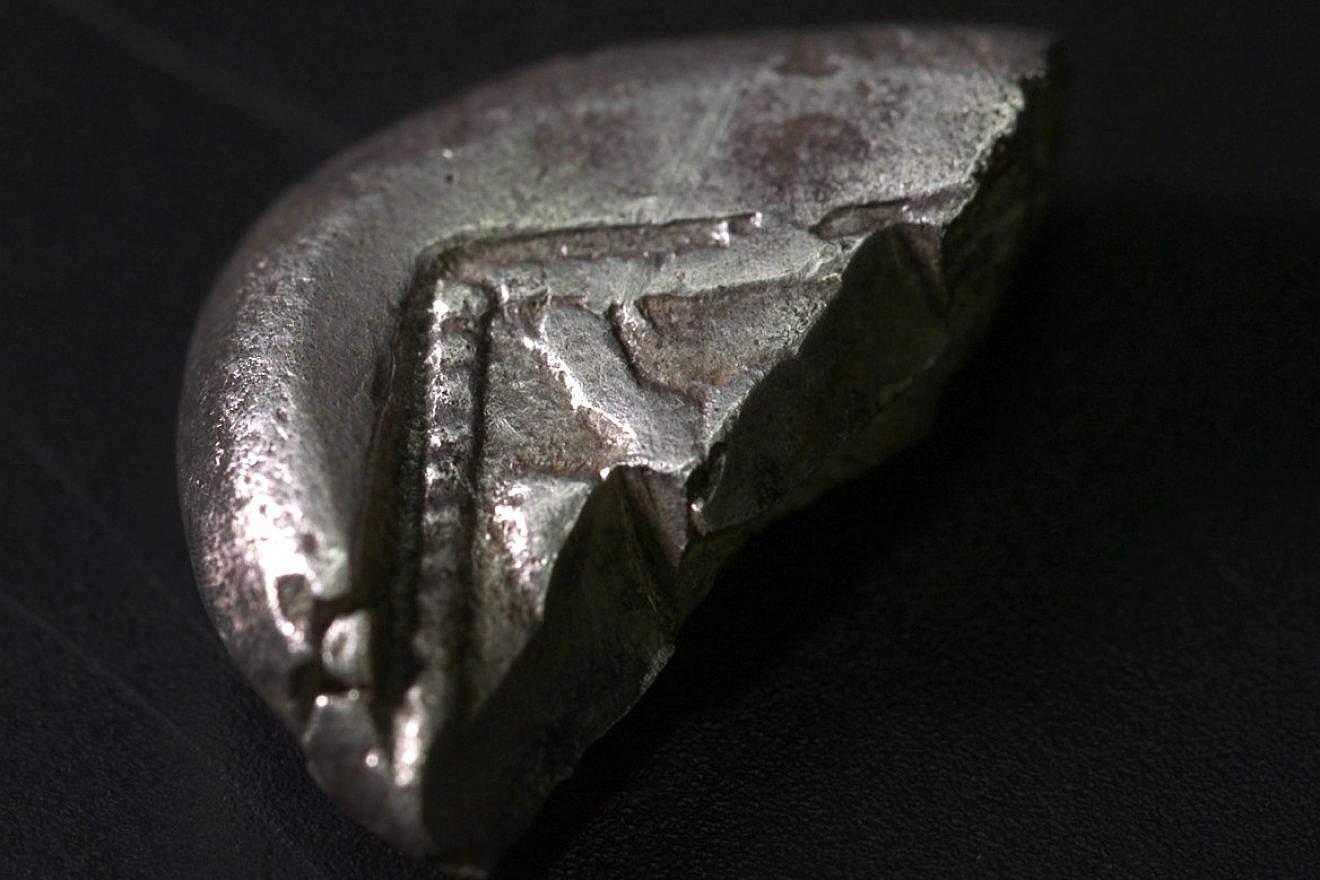An extremely rare silver coin dated to the Persian period (6th–5th centuries BCE) was recently discovered during an Israel Antiquities Authority excavation in the Judean Hills, providing evidence for the earliest known use of coins in the area.
The excavation also exposed a building from the First Temple Period, with even earlier evidence for commerce in the form of a shekel weight.
The coin, found intentionally broken, was minted with a square stamp embedded in one face; later, more sophisticated techniques produced coins with protruding rather than sunken stamps.
“The coin is extremely rare, joining only half a dozen coins of its type that have been found in archaeological excavations in the country,” said Robert Kool, head of the IAA’s Numismatic Department.
“The coin was minted in a period when the use of coins had just begun. The rare find contributes information concerning the way trade was carried out, and the process whereby global commerce moved from payment by weighing silver pieces to the use of coins,” he added.
The coin belongs to a group of very early coins minted outside Israel, in the regions of ancient Greece, Cyprus and Turkey. In the 6th–5th centuries BCE, such coins began to appear at sites in the Land of Israel.
That the coin was found intentionally cut into two indicates that in the 4th century BCE it was used as a weighed piece of silver rather than a coin, even though coins were current in this period.
“The [excavation] site was situated in the rural area of the Kingdom of Judah, whose capital was in Jerusalem. It was first settled in the First Temple period, in the 7th century BCE [2,700 years ago], during the reigns of the kings of Judah, Hezekiah, Manasseh, Amon and Josiah, a peak settlement period,” explained excavation directors Michal Mermelstein and Danny Benayoun.

A characteristic “four-room house” was uncovered from this period, and the shekel weight was found on the floor of one of the rooms. The dome-shaped stone weight would have been used for weighing metals, spices and other valuable commodities. The sign on the weight was an ancient Egyptian (hieratic) abbreviation for the word shekel, and the single incised stroke represents one shekel. The stone weighs 11.07 g.
“This was in effect a standard weight in the region of the Kingdom of Judah, showing that commodities were carefully weighed in the markets,” said Mermelstein and Benayoun.
Added Eli Escusido, director of the IAA: “It is always surprising how important findings are discovered in unexpected places. The tiny coins are a crucial source of information in archaeology. They provide us visual details, inscriptions and dates. Through a tiny object like a coin, it becomes possible to trace human thought processes and observe that our economic habits have remained largely unchanged for thousands of years—only the technology has changed. In this context, it is interesting to consider future archaeological research in a world that has adopted electronic commerce.”



























